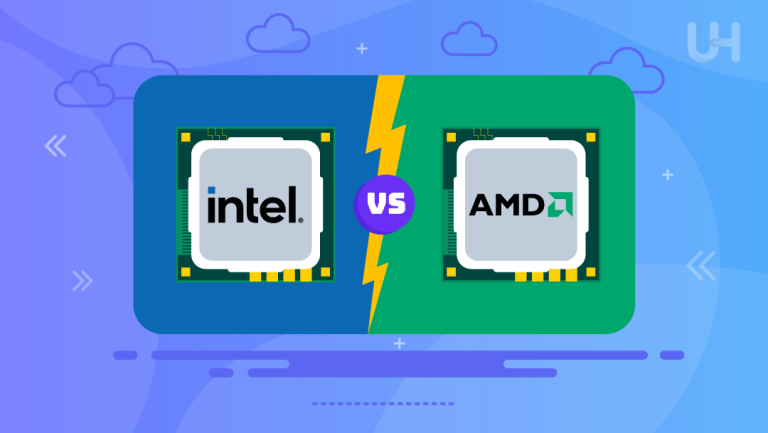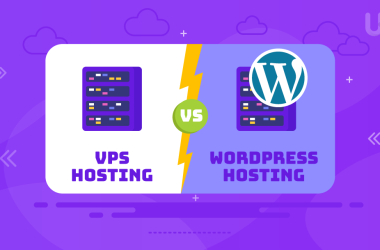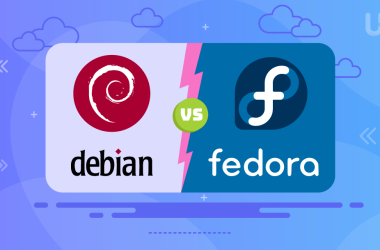GPUs (Graphics Processing Units) and CPUs (central processing units) are two critical components that serve different purposes. The CPU acts as the main processor of a computer, performing tasks and executing programs. It manages basic operations and processes data. In contrast, the GPU specializes in handling graphics and visual tasks, making it essential for gaming, design, and video rendering.
Understanding the distinctions between GPUs and CPUs is crucial for making informed hardware choices. In this blog, we will compare these two components, highlighting their key differences and use cases. By the end, you will have a better understanding of whether to choose a CPU or a GPU based on your specific needs.
What is a CPU?
A CPU stands for Central Processing Unit. It can be simply defined as a brain of a computer. It is the main body of a computer that is used to do most computing tasks while controlling other parts of a computer. This unit has to process instructions from any of the programs or applications running on a computer. In other words, it performs such operations as calculations data processing, and decision-making operations. It is a very important factor in modern computing that spans from personal computers to fully managed dedicated servers.
The architecture of the CPU includes several cores, which are thought of as mini processors themselves within the main unit. These cores allow the CPU to execute several tasks simultaneously. Most modern CPUs make use of the number of cores to make processing faster and easier. Then, the CPU also accommodates a cache memory. It is utilized for the storage of frequently used instructions for quicker access. This raises the processing and reduces data retrieval from slower storage, such as RAM or a hard drive.
What is a GPU?
A GPU, or Graphics Processing Unit, is specifically designed to handle graphics and visual data. It processes a massive amount of data in a simultaneous way which makes it highly effective. Such as in rendering images, videos, and complex visual effects. It is a significant requirement for applications like gaming, video editing, and 3D rendering.
The architecture of a GPU is quite different from that of a CPU. Hundreds of thousands of smaller cores in a GPU are made to be parallel processors. It is, therefore, possible for a GPU to process multiple tasks at once. Especially in the realm of pixel rendering and image creation. While CPUs are there for general computing, GPUs are designed for repetitive calculations. Their architecture and design enable them to deliver high performance in image and video-related tasks. While offloading these heavy tasks from the CPU.
Key Differences: GPU vs CPU
Here are the key differences between GPU vs CPU:
Architecture
The core architecture of the CPU and GPU differs significantly. Each has in mind a different type of work that it does best to perform. A CPU contains a few powerful cores, and it is designed to run sequential tasks. This makes it quite appropriate for carrying out complex tasks that require concentration and precision, such as running operating systems and general computing functions. They are built for low network latency tasks where speed and precision count.
On the other hand, in a GPU, thousands or hundreds of tiny cores are designed to have parallel processing. These thousand cores are ideal for running several tasks at once, especially repeated calculations. Graphics rendering is one such example: many calculations take place simultaneously. In short, a CPU is made to excel in sequential patterns. The GPUs are built on heavy-scale parallelism, which is essential for graphics and visualization of products.
Maximize Performance with High RAM Servers!
Looking to enhance your computing performance? Discover how to choose between CPU and GPU for your specific needs in our in-depth blog. For more powerful options, check out our High RAM VPS solutions at Ultahost.
Performance
The performance of CPUs and GPUs differ due to their functions. CPU performance is often measured by clock speed, in GHz, core count, and IPC instruction per clock. High clock speeds and count enable CPUs to process both single-threaded and multi-threaded tasks quickly, making them strong in general computing as well as complex operations.
The performance of the GPU is measured in terms of cores, FLOPS, and memory bandwidth. GPUs are optimized for tasks that require repetitive calculations, such as rendering images, video editing, and AI tasks. With their architecture, many tasks are handled in parallel, so they are much better suited to graphics-intensive and data-intensive applications.
Memory and Bandwidth
Another major difference is in memory structure within the CPUs vs GPUs. While CPUs do make use of a small amount of high-speed cache memory within the CPU, such a cache enables quicker access to frequently used data while reducing retrieval from slower sources of data, such as the RAM. Bandwidth within memory for a CPU also is much smaller than within a GPU since a CPU is managing far fewer parallel tasks at any given time.
On the other hand, a GPU uses a special memory type called VRAM. This stands for Video Random Access Memory. The type of memory is specially designed to support large data sets and high memory bandwidth in the process of rendering graphics and models for machine learning. Since the higher bandwidth means a large amount of data could be transferred rapidly, a smooth performance in graphics-intensive tasks can be delivered. VRAM is optimized for high-bandwidth and low-latency access to enable the GPU to obtain what it needs for rendering quickly. On the whole, VRAM in GPUs provides the needed speed as well as capacity for handling enormous parallel tasks, whereas CPU cache focuses on smaller, frequent tasks.
Power Consumption in CPU vs GPU
Architectures and purposes differ concerning power efficiency between CPUs and GPUs. CPUs are much more power efficient for low-level processing of tasks. It is designed to perform a wide variety of tasks with controlled power usage, and it keeps heat production manageable. Most of the CPUs require moderate cooling systems such as heat sinks and basic fans.
While, on the other hand, GPUs utilize much more power due to their higher parallel processing capacities. Such higher power use also often generates more heat. Then there would be a demand for advanced cooling solutions, from dedicated fans and heat pipes to liquid cooling. Some high-performance GPUs tend to have a high energy appetite since they are highly involved applications with lots of graphics, or highly intensive computations concerning data, impacting the energy consumed by the entire system.
CPU vs GPU: Overview

Here’s a table summarizing the key differences between CPUs vs GPUs:
| Feature | CPU (Central Processing Unit) | GPU (Graphics Processing Unit) |
|---|---|---|
| Primary Function | General-purpose processing; handles a wide range of computing tasks | Specialized for parallel processing; optimized for graphics and visual tasks |
| Architecture | Fewer cores (typically 4-16); optimized for sequential processing | Hundreds to thousands of smaller cores; optimized for parallel processing |
| Processing Type | Sequential processing; best for single or few tasks in quick succession | Parallel processing; handles multiple tasks simultaneously |
| Performance Metrics | Measured in clock speed (GHz), cores, and IPC (Instructions per Clock) | Measured in FLOPS (Floating Point Operations per Second) and memory bandwidth |
| Memory Structure | Uses cache memory (L1, L2, L3) for quick data access | Uses VRAM (Video RAM) for handling large datasets |
| Ideal Tasks | Suitable for multitasking, word processing, browsing, and OS functions | Suitable for gaming, video rendering, 3D modeling, and machine learning |
| Power Consumption | Generally lower power consumption; often requires basic cooling | Higher power consumption; requires advanced cooling solutions |
| Cost | More cost-effective for general-purpose tasks | Can be more expensive due to specialized capabilities |
| Examples of Use Cases | Office applications, browsers, general computing | Gaming, AI training, data analysis, video editing |
| Future Trends | Increased core counts, focus on efficiency and multitasking | Growth in AI, ray tracing, machine learning, VR/AR applications |
This table provides a quick overview to help in deciding between a CPU or GPU based on task requirements.
Use Cases of GPU vs CPU
Understanding the ideal use cases for GPUs and CPUs helps determine which processor best suits specific tasks. Let’s discuss them in detail:
General Computing Tasks (CPU)
CPUs are quite good for general computing purposes, such as word processing, web browsing, and multitasking. Applications such as Microsoft Word, Excel, and internet browsers are heavily dependent on the CPU for their responsive performance, as such applications require very low resources and sequential processing.
Graphics and Gaming (GPU)
GPUS is powerful in rendering graphics and games, handling complex visualizations and real-time animations. For example, in high-definition games such as “Cyberpunk 2077” or “Call of Duty: World At War,” the GPU executes lighting, texture, and detailed scenarios for smooth and engaging experiences. Engines like Unreal and Unity heavily depend on GPU with NVMe servers further enhancing performance, providing blazing-fast data access and improved system responsiveness.
Data Processing and Machine Learning (GPU)
GPUs deliver the parallel power necessary to process large data sets needed for applications in data processing and machine learning. It is from these powerful components that deep learning frameworks, such as TensorFlow and PyTorch, make significant use of GPU acceleration when training and executing complex models.
Video Editing and Rendering (GPU)
Video editing and rendering also require GPUs to be able to process in real-time because video editing and rendering take up a lot of space, and effects, transitions, and high-definition rendering in software such as Adobe Premiere Pro and DaVinci Resolve use the GPU, which provides far faster workflows and superior quality.
CPU vs GPU: Which One to Choose?
The choice between a CPU and a GPU is typically dependent on the task one wishes to perform, budget, and system requirements. The former is strong for general computing tasks or multitasking, while the latter is recommended for gaming, video editing, or machine learning applications. A balanced system featuring both a capable CPU and a good GPU is highly ideal for users who would want to use both without bottlenecks.
GPU vs CPU: Future Trends
The emerging trends in AI, machine learning, and virtual reality are demanding more and more high-performance GPUs to sustain the parallel processing requirement for these applications such as high-performance gaming with a gaming server, advanced data processing, and artificial intelligence. The CPU is being designed to increase efficiency and a large number of cores. Hybrid chips that merge the functionality of a CPU and a GPU would dominate performance for various workloads on the same package in the future.
Conclusion
CPUs vs GPUs have distinct roles in computing. CPUs are designed for sequential tasks and are ideal for general computing, while GPUs excel at parallel processing, making them essential for graphics rendering, gaming, and data-intensive applications like AI and machine learning.
Choosing the right CPU or GPU depends on specific needs: a strong CPU is best for everyday tasks, while a powerful GPU is crucial for graphics-heavy applications. A balanced system enhances overall performance.
Choosing between CPU and GPU is key to optimizing performance based on your needs, from gaming to data processing. Understanding their differences allows for better system performance. For fast and dependable VPS options, visit Ultahost to enhance your computing experience.
FAQ
What is the main difference between GPU vs CPU?
CPUs handle general tasks with fewer cores, while GPUs excel at parallel processing with many smaller cores.
When should I choose CPU vs GPU?
Choose a CPU for everyday tasks and a GPU for graphics-intensive applications and machine learning.
How do GPU and CPU work together in a system?
The CPU manages tasks, while the GPU handles graphics and parallel processing to boost performance.
What applications benefit most from CPU or GPU?
General apps like word processing benefit from CPUs, while gaming and AI tasks thrive on GPUs.
How do I decide between CPU or GPU for gaming?
Prioritize a powerful GPU for high-quality graphics and smooth gameplay, supported by a capable CPU.
Is a GPU necessary for video editing?
Not necessary, but a GPU significantly speeds up rendering and processing effects in video editing.
Are there hybrid options for CPU and GPU?
Yes, hybrid chips like APUs combine CPU and GPU functions on a single chip for balanced performance.










